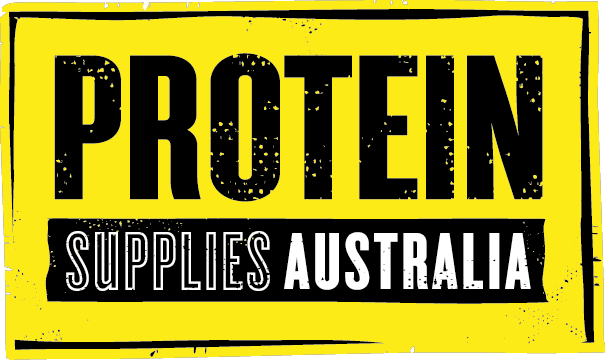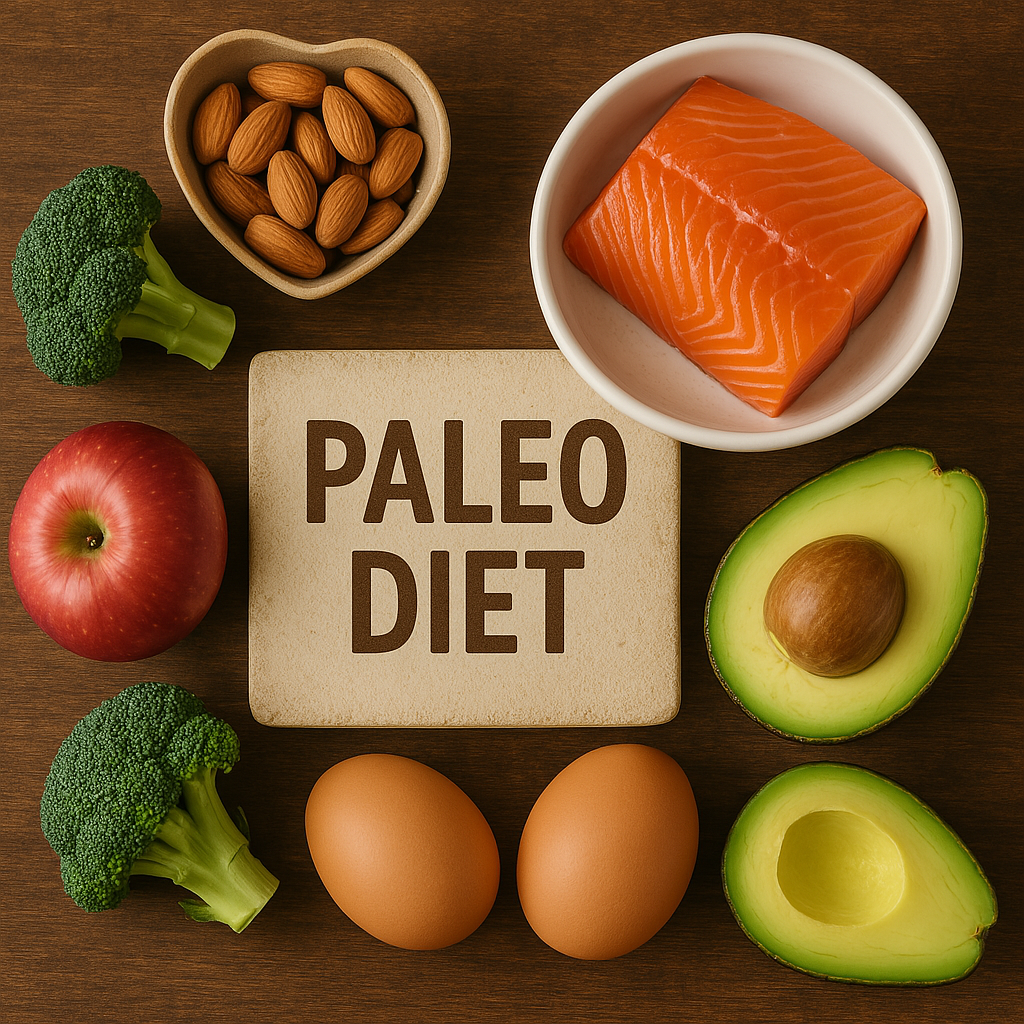The modern paleo diet, an evolution of the traditional paleo diet, mimics the dietary habits of our prehistoric ancestors by focusing on whole, unprocessed foods.
It consists of lean meats, fish, fruits, vegetables, nuts, and seeds, and excludes grains, legumes, and dairy products. This diet aims to align with our genetic makeup and tackle modern health issues. In this article, we’ll dive into its benefits, potential drawbacks, and some practical meal ideas.
Key Takeaways
-
The Paleo Diet emphasises whole, unprocessed foods that replicate the eating habits of ancient humans, excluding grains, legumes, and dairy.
-
Key health benefits of the Paleo Diet include weight loss, improved digestion, and enhanced metabolic health, although potential drawbacks include nutrient deficiencies and sustainability issues.
-
Practical tips for starting the Paleo Diet involve effective meal planning, prioritising fresh produce and quality meats, and avoiding common dietary mistakes.
Understanding the Paleo Diet: Hunter Gatherer Diet
The Paleo Diet aims to mimic the eating habits of our prehistoric ancestors, focusing on whole foods that could be hunted or gathered. It is often referred to as the Paleolithic Diet, Stone Age Diet, or Caveman Diet. This eating plan emphasises consuming unprocessed foods and excludes grains, legumes, dairy products, and the hunter gatherer diet, aligning with paleolithic diets. Paleolithic humans would have thrived on such a diet.
There are variations among paleo diets, each with its own set of guidelines and restrictions. Common concerns associated with paleo diets include the exclusion of whole grains and legumes, which can lead to nutritional deficiencies. Additionally, the long-term effects of paleo diets are not well-researched compared to more balanced dietary approaches.
The Paleo Diet aims to address modern health issues by eliminating processed foods and emphasising nutrient-dense, whole foods, which align better with our genetics.
Core Principles of Paleo Diet
At its core, the Paleo Diet encourages eating like our ancestors, which includes prioritising unprocessed paleo foods and avoiding grains, legumes, and dairy products. A significant aspect of this diet is the inclusion of animal foods, which were a substantial part of the nutrition of prehistoric hunter-gatherers and influenced their health outcomes and evolutionary traits.
The focus is on:
-
Lean meats
-
Fish
-
Fruits
-
Vegetables
-
Nuts
-
Seeds
While steering clear of processed foods.
Allowed Foods
The Paleo Diet includes a variety of nutrient-dense foods, such as lean meats from grass-fed animals or wild game, seasonal fruits, and vegetables. Fish, nuts, and seeds are also staples, providing essential nutrients while avoiding processed foods.
Simple and nutritious Paleo-friendly snacks include fruits, nuts, baby carrots, and salsa. Good fats like avocado, extra virgin olive oil, coconut oil, and butter are also recommended.
A well-rounded 7-day Paleo meal plan might include a variety of foods such as lean meats, fish, fresh fruits, and vegetables to ensure a balanced intake of essential nutrients.
Forbidden Foods: Processed Foods
The Paleo Diet strictly eliminates certain food groups that are considered non-compliant with its principles. Grains and grain-based foods are completely excluded. Legumes, including chickpeas, beans, peas, and lentils, are also off-limits. Dairy products, refined sugars, and highly processed foods are not part of the Paleo Diet.
Excluding these food groups aligns with the diet’s focus on unprocessed, whole foods.
Health Benefits of the Paleo Diet
The Paleo Diet offers various health benefits, such as weight loss, improved digestion, and enhanced metabolic health. Focusing on whole foods and eliminating processed items helps address modern health issues like obesity, diabetes, and heart disease.
Healthy diets like the Paleo Diet can help prevent chronic diseases such as cardiovascular disease and obesity by emphasizing whole foods like fruits and vegetables while avoiding processed foods.
Emphasizing nutrient-dense foods can significantly improve overall wellness.
Benefit 1: Weight Loss
Weight loss is a primary benefit of the Paleo Diet. By promoting whole foods and reducing processed foods, the diet helps manage cravings and increases satiety. High-protein foods are crucial for weight management as they help users lose weight and control cravings.
While long-term weight loss on the Paleo Diet may not differ significantly from other diets after two years, the initial weight loss can be encouraging.
Benefit 2: Improved Digestion
Avoiding grains and legumes, which some individuals find difficult to digest, can improve digestion on the Paleo Diet. Many people experience fewer digestive issues by eliminating these foods.
Better digestion can enhance overall well-being and comfort for those following the Paleo lifestyle.
Benefit 3: Enhanced Metabolic Health
Initial studies suggest the Paleo Diet may enhance insulin sensitivity more effectively than other diets. This improvement can lead to better glucose tolerance and reduced cardiovascular risks.
Potential Drawbacks of the Paleo Diet
Despite its many benefits, the Paleo Diet also has potential drawbacks. These include nutrient deficiencies, sustainability issues, and cost and accessibility challenges. The elimination of entire food categories can lead to missing essential nutrients, and the high reliance on animal-based foods raises environmental concerns.
Drawback 1: Nutrient Deficiencies
Excluding dairy products can result in insufficient calcium intake on the Paleo Diet. Nutrients that might be lacking include those from whole grains, legumes, and low-fat dairy.
According to the Australian Dietary Guidelines, the Paleo Diet lacks evidence as a healthy diet due to its exclusion of essential food groups, potentially leading to nutrient deficiencies.
The long-term risks of nutrient deficiencies are not fully known. Individuals with chronic conditions should seek medical advice before starting the diet.
Drawback 2: Sustainability Issues
The Paleo Diet’s reliance on animal-based foods raises concerns about its long-term sustainability, particularly regarding resource consumption and environmental impact in the context of the human diet.
Drawback 3: Cost and Accessibility
Due to its emphasis on unprocessed foods and higher-quality meats, the Paleo Diet can be more expensive. Accessing Paleo-friendly foods can be challenging, especially in areas lacking fresh produce and quality meats. Its restrictive nature can also make it difficult to adhere to over time.
These challenges can deter individuals from successfully maintaining the diet in the long term.
Comparing Paleo to Other Diets
Comparing the Paleo Diet to other popular diets highlights its benefits and drawbacks. While it may help with weight management, lowering blood pressure, and improving cholesterol levels, selecting lean meat options like skinless poultry and grass-fed beef can further manage health risks and promote a balanced dietary approach.
The Mediterranean Diet, for example, is generally considered less restrictive and may lead to better long-term health outcomes.
Mediterranean Diet vs. Paleo Diet
The Mediterranean Diet emphasizes healthy fats and plant foods, whereas the Paleo Diet focuses on protein-rich foods, primarily red meat. The Mediterranean Diet is less restrictive and allows a wider variety of foods.
It is associated with positive long-term health outcomes compared to the Paleo Diet.
Vegetarian Diet vs. Paleo Diet
The Vegetarian Diet emphasizes plant-based foods, while the Paleo Diet focuses on high protein intake from animal sources. This fundamental difference in food sources can lead to varied health outcomes and accessibility issues between the two diets.
Practical Tips for Starting a Paleo Diet
Starting a Paleo Diet can be daunting, but practical tips can ease the transition. Meal planning, shopping guides, and avoiding common mistakes are key to success.
Incorporating recipes and planning meals in advance can help maintain variety and balance.
Meal Planning
Incorporating a variety of proteins, vegetables, and healthy fats ensures nutritional balance in meal planning. Setting aside time each week for meal prep can help maintain a varied Paleo Diet.
Planning meals in advance helps adhere to Paleo guidelines while offering flexibility in food choices.
Shopping Guide
When shopping for a Paleo Diet, prioritize fresh produce, high-quality meats, and natural oils such as avocado and olive oil.
Focus on selecting whole foods from the produce and meat sections while avoiding processed food aisles.
Common Mistakes to Avoid
A common mistake when starting a Paleo Diet is consuming too many high-fat foods without balancing them with fruits and vegetables.
Neglecting to include a variety of foods can lead to boredom and dietary burnout.
Sample 7-Day Paleo Meal Plan
A comprehensive 7-day meal plan can help illustrate the structure and food choices of the Paleo Diet. This plan provides a variety of meals to ensure a balanced intake of essential nutrients while adhering to Paleo principles.
Day 1
For breakfast on Day 1, ‘Egg in a Hole’ peppers paired with avocado salsa is recommended. A mix of fruits and nuts can also be included, aligning with Paleo dietary guidelines.
Selecting Paleo-friendly foods such as eggs, vegetables, fruits, and nuts helps support the principles of the diet. (You can add our Paleo friendly protein)
Day 2
Dinner on Day 2 features guacamole-stuffed poblano peppers served with a mixed green salad. Meals on Day 2 efficiently utilise leftovers from previous dishes to minimise waste and enhance flavour. (You can add our Paleo friendly protein)
Day 3
Dinner on Day 3 includes curried chicken with sweet potatoes and snap peas, cooked in coconut milk. This meal is healthy, flavorful, and fits perfectly within Paleo guidelines. (You can add our Paleo friendly protein)
Day 4
Day 4’s protein-rich breakfast includes tuna and avocado on sweet potato toast.
This combination offers a balanced and nutritious start to the day. (You can add our Paleo friendly protein)
Day 5
Day 5 features salmon with asparagus, finished with a lemon-garlic butter sauce, served over cauliflower rice. This meal focuses on whole foods and aligns with Paleo principles. (You can add our Paleo friendly protein)
Day 6
Breakfast on Day 6 features green eggs and ham soup, made with pureed veggies and topped with a poached egg. Meals like a vegetable stir-fry with chicken or a hearty soup made with broth and fresh ingredients are typical for Day 6. (You can add our Paleo friendly protein)
Day 7
Paleo meals often include healthy fats such as avocado, nuts, and olive oil, which are crucial for overall health. These fats can enhance the absorption of fat-soluble vitamins and contribute to satiety.
Studies suggest the Paleo Diet can improve metabolic health, including better glucose tolerance and reduced cardiovascular risk factors. (You can add our Paleo friendly protein)
Summary
The Paleo Diet offers a unique approach to eating by mimicking the dietary habits of our prehistoric ancestors. Emphasizing whole, unprocessed foods and eliminating grains, legumes, and dairy, the diet aims to address modern health issues and promote overall wellness.
While it has shown potential benefits such as weight loss, improved digestion, and enhanced metabolic health, it also poses challenges like nutrient deficiencies, sustainability issues, and higher costs.
Comparing the Paleo Diet to other popular diets like the Mediterranean and Vegetarian diets provides valuable insights into its effectiveness and limitations. Practical tips, meal planning, and a sample 7-day meal plan can help those interested in adopting the Paleo Diet to get started successfully.
Ultimately, the Paleo Diet may not be suitable for everyone, but it offers a compelling option for those seeking a diet focused on whole foods and ancestral eating patterns.





What is Casein Protein: Benefits, Uses, and Dosage Explained
What Is Whey Protein: Benefits, Types, and How to Use It